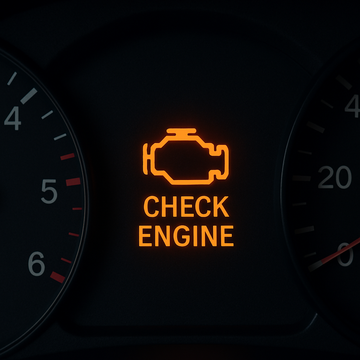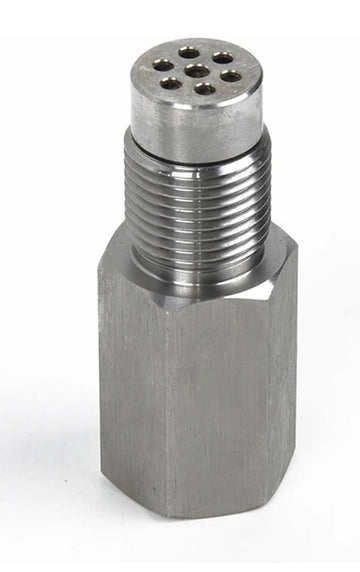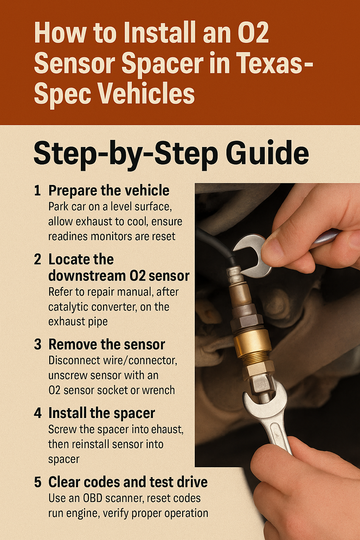Are O2 Sensor Spacers Legal? A Detailed Look at Emissions Compliance and Regulations
Summary:
O2 sensor spacers are a popular tool among car enthusiasts and performance tuners looking to manage check engine lights (CELs) after installing high-flow catalytic converters or deleting them entirely. But their legality varies significantly based on location and intended use. In this article, we explore what O2 sensor spacers do, why they're used, and most importantly, whether they're legal under U.S. federal and state emissions laws.
Table of Contents:
-
What Are O2 Sensor Spacers?
-
Why Are O2 Sensor Spacers Used?
-
How Do O2 Sensor Spacers Work?
-
Federal Emissions Laws and EPA Regulations
-
State-Level Emissions Compliance (Focus on California & New York)
-
Are O2 Sensor Spacers Legal?
-
Legal Alternatives to O2 Sensor Spacers
-
Consequences of Using Illegal Emissions Equipment
-
Summary: When and Where O2 Sensor Spacers Are Legal
-
FAQ
1. What Are O2 Sensor Spacers?
Oxygen sensor spacers, also known as O2 extenders or O2 bungs, are small metal adapters installed between the oxygen sensor and the exhaust pipe. Their purpose is to alter the sensor's position slightly out of the direct exhaust stream.
2. Why Are O2 Sensor Spacers Used?
The primary use of O2 sensor spacers is to prevent the post-cat O2 sensor from detecting too much unburned oxygen. This helps avoid triggering a CEL due to:
-
High-flow aftermarket catalytic converters
-
Catless downpipes or test pipes
-
Modified exhaust systems
3. How Do O2 Sensor Spacers Work?
By moving the sensor out of direct exhaust flow, spacers reduce the sensor's exposure to high oxygen levels, simulating the presence of a properly functioning catalytic converter. This tricks the ECU into thinking emissions are within range.
4. Federal Emissions Laws and EPA Regulations
Under the Clean Air Act, the Environmental Protection Agency (EPA) prohibits any modifications that bypass, defeat, or render inoperative any emission control device or system. This includes catalytic converters and oxygen sensors.
-
Using O2 spacers to bypass emissions is considered a violation of federal law.
-
The EPA has pursued enforcement actions against manufacturers and sellers of "defeat devices," including sensor spacers.
5. State-Level Emissions Compliance (Focus on California & New York)
Some states, like California and New York, have adopted stricter emissions rules through the California Air Resources Board (CARB):
-
CARB regulations explicitly prohibit devices that defeat emissions monitoring systems.
-
Vehicles equipped with O2 spacers may fail emissions testing or visual inspection.
-
Selling or installing such parts for on-road use can result in fines.
6. Are O2 Sensor Spacers Legal?
The legality of O2 spacers depends on:
-
Intended Use: Track/off-road use only is typically acceptable.
-
Jurisdiction: Legal in some states for off-road, illegal in others regardless of use.
-
Installation Purpose: If installed to defeat emissions equipment, they are illegal under federal law.
In summary:
-
Illegal for road use when used to bypass emissions systems
-
Potentially Legal for off-road or racing-only vehicles
-
Not CARB-Compliant unless specifically approved
7. Legal Alternatives to O2 Sensor Spacers
If you’re trying to avoid a CEL after upgrading your exhaust system, consider these compliant options:
-
Use a high-quality, EPA-compliant catalytic converter
-
Tune the ECU with emissions-compliant software
-
Select aftermarket parts with CARB EO (Executive Order) numbers
8. Consequences of Using Illegal Emissions Equipment
Using non-compliant parts, including O2 sensor spacers, can lead to:
-
Failing emissions inspections
-
EPA and state fines
-
Voided vehicle warranties
-
Legal penalties for shops that install them
9. Summary: When and Where O2 Sensor Spacers Are Legal
| Use Case | Legal Status |
|---|---|
| Off-road or race vehicles | Generally legal |
| Street use (any state) | Illegal under federal law |
| CARB states (CA, NY, etc.) | Strictly prohibited |
| EPA-compliant installation | Rare and conditional |
10. FAQ
Q: Can I use an O2 sensor spacer to fix a CEL after installing a high-flow cat?
A: Legally, no. If it’s used to bypass emissions detection, it violates EPA rules.
Q: Are there O2 spacers that are legal in California?
A: Only if they have a CARB EO number, which is extremely rare.
Q: Will I pass emissions with an O2 spacer?
A: Possibly, but it's not guaranteed—and it may be illegal depending on your state.
Q: What’s the best way to avoid a CEL after modifying my exhaust?
A: Use CARB/EPA-approved parts or consult a tuner who can perform legal ECU adjustments.


![ Fix P0420 Fast: Do O2 Sensor Spacers Really Work? [Legal Tips Inside]](http://ghalysmotorparts.com/cdn/shop/articles/ChatGPT_Image_Oct_10_2025_10_40_32_AM.png?v=1760118069&width=360)
![Do O2 Sensor Spacers Really Help Clear the P0420 Code? [Expert Guide]](http://ghalysmotorparts.com/cdn/shop/articles/ChatGPT_Image_Oct_9_2025_09_28_33_PM_654c1798-c0d4-428f-a5b6-f20b95661b54.png?v=1760129952&width=360)


